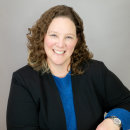Setting Boundaries Tips Speakers
Ever booked a speaker who sounded great on paper, but left your audience more confused than inspired?
Finding someone who can actually speak to the real challenges of setting boundaries-without sounding preachy or rehearsed-isn't always easy.
You might be asking, how do I find the right setting boundaries tips speakers who actually connect with people?
These speakers get it.
Setting boundaries isn't just a trend, it's a skill people need-at work, in relationships, and in everyday life.
The best setting boundaries tips speakers break down the how, not just the why.
They share practical tools, not just personal stories.
Whether you're organizing a leadership summit, a mental wellness podcast, or an HR workshop, these voices bring clarity, confidence, and credibility.
I've seen how the right speaker can shift the energy in a room and give people permission to prioritize themselves.
That's what these folks do.
Scroll through this list of standout setting boundaries tips speakers and find someone who fits your audience-and your message.
Top Setting Boundaries Tips Speakers List for 2025
Kay Julien
Psychologist, Conflict Coach, and Rower, who believes in God, the power of human connection, and the therapeutic properties of ice cream.
Lisa Giesler
Uncluttered and Finding joy and purpose in life's
Juanita Ellingson
Helping client's break free from the cage of unforgiveness!
Alyssa Utecht
Helping sensitive women plug their energy leaks and feel like themselves again.
Evelyn Marley
Empowering Growth: Master Boundaries, Communication, and Awareness
Denise Willis
From Broken to Empowered-Design the Life You Love
Veronica Weedon
Elevate your health, relationships, human potential & lifestyle design
Carrie Dubber
Empowering midlife women to reclaim confidence and thrive!
Camille Gallinger
Personal Vitality Coach! Energy, Joy, and Momentum!
What Makes a Great Setting Boundaries Tips Speaker
Take someone like Nedra Glover Tawwab, a licensed therapist and boundary-setting expert. She doesn't just list tips - she tells stories of how boundary violations show up in everyday life, from overbearing bosses to guilt-driven family dynamics. Her delivery is grounded, relatable, and practical. That's what makes her memorable. She doesn't speak at you - she speaks with you.
Great setting boundaries tips speakers also tailor their message to the audience. A corporate crowd in Singapore might need strategies for hierarchical work cultures, while a group of solopreneurs in Berlin might crave tips for separating work from personal life when both happen in the same room. The best speakers adapt without diluting their message.
And here's the kicker: they're not afraid to challenge the room. They'll ask hard questions like, 'What are you tolerating that's draining your energy every day?' or 'Who benefits when you say yes to everything?' That discomfort? That's where transformation starts.
So if you're looking for someone to just recite a list of dos and don'ts, keep scrolling. But if you want someone who can create a shift - in mindset, behavior, and boundaries - that's the mark of a great setting boundaries tips speaker.
How to Select the Best Setting Boundaries Tips Speaker for Your Show
1. Define Your Audience's Needs.
- Are they overwhelmed entrepreneurs? Burned-out corporate teams? Parents juggling remote work?
- Understanding their pain points helps you narrow down the speaker who can address them with relevance.
2. Search with Intention.
- Use platforms like Talks.co to browse speaker profiles. Filter by niche, experience, or even region.
- Look for speakers who specialize in boundary-setting within your audience's context - like workplace culture, mental health, or digital detox.
3. Review Their Content.
- Watch past talks, listen to podcast interviews, or read their blog posts.
- Are they engaging? Do they offer actionable insights or just theory?
- For example, a speaker like Terri Cole often blends psychology with real-world scripts - a great fit for audiences who want practical language tools.
4. Check Social Proof.
- Look at testimonials, LinkedIn endorsements, or reviews on their speaker page.
- Have they spoken at reputable events or been featured in media outlets?
5. Reach Out for a Pre-Call.
- Before booking, schedule a 15-minute call to gauge chemistry.
- Ask how they tailor their message to different audiences and what outcomes they aim to deliver.
Choosing the right speaker is about more than credentials - it's about connection. When your audience feels seen and empowered, you'll know you made the right choice.
How to Book a Setting Boundaries Tips Speaker
1. Start with a Clear Brief.
- Define your event type (summit, podcast, webinar), audience profile, and desired outcomes.
- Include your preferred topic angle - e.g., 'setting boundaries in hybrid work environments' or 'boundaries for creative entrepreneurs'.
2. Use a Speaker Platform.
- Platforms like Talks.co streamline the process. You can browse vetted speakers, view their availability, and even message them directly.
- Look for a speaker with a dedicated speaker page - this often includes their bio, talk topics, testimonials, and booking form.
3. Reach Out with Specifics.
- When contacting a speaker, include:
- Date and time (with time zone)
- Format (live, recorded, panel, solo)
- Audience size and profile
- Compensation (if applicable)
- Tech setup or platform (Zoom, StreamYard, etc.)
4. Confirm the Details.
- Once they accept, send a calendar invite and a confirmation email with:
- Event title and description
- Speaker bio and headshot request
- Tech check date (if needed)
- Any promotional expectations (e.g., social shares)
5. Prep for Success.
- Share your audience's top challenges or questions in advance.
- Provide a format outline or sample questions if it's an interview.
- Let them know how long they'll speak and if there's Q&A.
Booking doesn't have to be a hassle. With a clear ask and the right tools, you'll lock in a speaker who delivers real value - and makes your job easier.
Common Questions on Setting Boundaries Tips Speakers
What is a setting boundaries tips speaker
Unlike general motivational speakers, setting boundaries tips speakers zero in on the specific challenges people face when they overcommit, struggle to say no, or feel overwhelmed by external demands. Their talks often include practical frameworks, scripts, and mindset shifts that help people take control of their lives without guilt or burnout.
These speakers are often featured in corporate wellness programs, leadership retreats, entrepreneurship summits, and personal development podcasts. For instance, in a startup culture where 'hustle' is glorified, a boundaries speaker might teach founders how to create sustainable work habits that don't lead to team exhaustion.
They may also address cultural or gender-specific nuances. For example, in collectivist cultures, saying no to family or elders can be taboo - a skilled speaker will offer culturally sensitive strategies for boundary-setting that honor both personal needs and social norms.
In short, a setting boundaries tips speaker is a guide who helps people reclaim their time and energy - not through vague inspiration, but through clear, actionable strategies.
Why is a setting boundaries tips speaker important
In corporate environments, boundary issues often show up as unclear expectations, constant after-hours emails, or blurred roles. A speaker who specializes in boundary-setting can help teams establish norms that reduce stress and increase productivity. For example, implementing 'no meeting Fridays' or defining communication windows can drastically improve focus and morale.
In the entrepreneurial world, especially among solopreneurs and creators, the line between work and life often disappears. A boundaries speaker can introduce frameworks like time-blocking, client communication scripts, or digital detox practices that help business owners reclaim their evenings and weekends.
They're also essential in community and nonprofit spaces, where emotional labor and people-pleasing can lead to compassion fatigue. A speaker who understands these dynamics can offer tools for self-care and assertiveness that don't feel selfish - they feel necessary.
Ultimately, a setting boundaries tips speaker brings clarity where there's chaos. They give people permission - and the tools - to protect what matters most.
What do setting boundaries tips speakers do
Here's a breakdown of what they typically do:
- Deliver Keynote Talks and Workshops. They speak at events, summits, and conferences, offering insights on topics like 'How to Say No Without Guilt' or 'Boundaries for Remote Teams'. These sessions often include interactive exercises or real-life scenarios.
- Provide Practical Tools. They don't just talk theory. They share scripts, checklists, and frameworks. For example, a speaker might walk an audience through a 3-step formula for setting boundaries with clients who overstep.
- Tailor Content to Specific Audiences. Whether it's a group of healthcare workers in Toronto or tech founders in Bangalore, these speakers adapt their message to cultural, professional, and emotional contexts.
- Collaborate with Hosts and Organizers. As mentioned in 'How to Book a setting boundaries tips speaker', they often work closely with event hosts to understand the audience's needs and customize their delivery.
- Spark Long-Term Change. The best speakers don't just inspire during the session - they leave audiences with tools they can use long after the event ends. That might include follow-up resources, email templates, or access to a mini-course.
In essence, setting boundaries tips speakers are educators, facilitators, and change agents - helping people build lives and businesses that respect their limits and values.
How to become a setting boundaries tips speaker
1. Define Your Niche and Audience.
- Are you speaking to corporate teams, parents, educators, or entrepreneurs? Boundaries look different in each context.
- For example, a speaker focused on workplace boundaries might speak at HR conferences, while someone focused on parenting might target school events.
2. Build Your Signature Talk.
- Create a compelling keynote or workshop that delivers actionable tips. Think: '5 Boundaries That Save You 10 Hours a Week' or 'How to Say No Without Guilt'.
- Use real-world examples and frameworks. Brene Brown often uses vulnerability as a lens for boundaries. You can do the same with your unique angle.
3. Get Visible on Talks.co.
- Set up your speaker page on platforms like Talks.co. Include your bio, topics, testimonials, and a short video clip.
- This helps event organizers find and book you easily.
4. Connect with Hosts and Organizers.
- Reach out to podcast hosts, summit organizers, and event planners. Offer to speak for free at first to build momentum.
- Use LinkedIn and speaker directories to pitch yourself. Keep it short, clear, and focused on the value you bring.
5. Refine Through Feedback.
- After each talk, ask for feedback. Tweak your delivery, slides, and stories based on what lands well.
- Record your sessions and review them to improve your presence and pacing.
6. Scale with Online Summits.
- Once you've got a few talks under your belt, consider hosting your own virtual summit. It's a great way to grow your audience and authority fast.
Remember, it's not about being perfect. It's about being helpful, clear, and consistent. That's what makes a speaker memorable.
What do you need to be a setting boundaries tips speaker
First, you need domain knowledge. That doesn't mean a PhD in psychology (though that helps), but you should have a deep understanding of boundaries in your chosen context. Maybe you've coached leaders on time management, or you've developed a framework for emotional boundaries in relationships. Whatever your angle, it should be grounded in experience or research.
Second, you need a compelling message. This is your core idea - the one thing you want your audience to remember. For example, Nedra Glover Tawwab's message is that boundaries are a form of self-care. That clarity makes her talks powerful and easy to book.
Third, you need speaking skills. You don't have to be a TEDx veteran, but you should be able to deliver your message clearly and confidently. Practice helps. So does joining speaker communities or working with a coach.
Fourth, you need visibility. Platforms like Talks.co are great for this. You can create a speaker page, showcase your topics, and get discovered by event organizers. It's also helpful to have a basic website, a speaker reel, and a few testimonials.
Finally, you need a network. Connect with other speakers, podcast hosts, and summit organizers. The more people who know what you speak about, the more likely you are to get booked. And don't forget to follow up - relationships drive opportunities in this space.
Do setting boundaries tips speakers get paid
In the professional speaking world, speakers fall into different tiers. At the entry level, many speakers start by offering free talks to build credibility. But once you've got a strong message, a few testimonials, and some visibility, you can start charging.
Here's how it typically breaks down:
- Free to $500: New speakers, often speaking at local meetups, podcasts, or small virtual summits.
- $500 to $2,500: Mid-level speakers with a niche audience and a few notable appearances.
- $2,500 to $10,000+: Established speakers with a strong brand, published content, and demand from corporate or national events.
Some speakers also get paid indirectly. For example, they might speak for free but promote their coaching program or book. This is common in the personal development space.
Pros:
- Speaking can be a high-leverage way to build authority and income.
- It opens doors to consulting, media, and partnerships.
Cons:
- It can take time to get paid gigs.
- Travel and prep time can eat into your margins.
Bottom line: Yes, setting boundaries tips speakers get paid. But like any business, it takes strategy and consistency to reach that level.
How do setting boundaries tips speakers make money
1. Paid Speaking Engagements
- Corporate workshops, conferences, and summits often pay speakers to deliver keynotes or training sessions.
- Rates vary based on experience, audience size, and location.
2. Online Summits and Virtual Events
- Some speakers host their own summits, charging for access or upselling VIP passes.
- Others participate in summits to grow their list, then monetize through follow-up offers.
3. Courses and Coaching
- Many speakers create online courses around boundary-setting frameworks.
- Coaching packages (1:1 or group) are a common upsell after a talk.
4. Books and Digital Products
- Publishing a book can boost credibility and generate passive income.
- Downloadable guides, templates, or mini-courses are also popular.
5. Affiliate Partnerships
- Some speakers partner with tools or platforms aligned with their message (e.g. productivity apps, therapy services).
- They earn commissions by recommending these to their audience.
6. Corporate Consulting
- Larger organizations may hire speakers to audit internal culture and train teams on setting boundaries.
- This often leads to long-term contracts.
In short, speaking is often the front door to a broader business model. The most successful speakers diversify their income while staying aligned with their core message.
How much do setting boundaries tips speakers make
According to SpeakerHub and other industry sources, beginner speakers in the personal development space might earn:
- $0 to $500 per talk when starting out.
- $1,000 to $2,500 per talk once they have a few gigs and a niche following.
- $5,000 to $10,000+ per keynote for experienced speakers with a strong brand and media presence.
But that's just the speaking fee. Many speakers earn more from backend offers:
| Revenue Stream | Potential Monthly Income |
|---|---|
| Speaking Fees | $500 - $20,000+ |
| Online Courses | $1,000 - $50,000+ |
| Coaching Programs | $2,000 - $30,000+ |
| Book Royalties | $100 - $5,000+ |
| Affiliate Income | $200 - $10,000+ |
- Audience size: Larger followings mean more leverage.
- Niche: Corporate speakers often earn more than those in wellness or education.
- Geography: Speakers in the US, UK, and Australia tend to command higher fees.
- Platform: Speakers with a Talks.co page and strong online presence get booked more often.
So while some speakers earn a few hundred a month, others build six- or seven-figure businesses around their message. The key is to treat it like a business, not a hobby.
How much do setting boundaries tips speakers cost
1. Experience Level
- New Speakers: $0 to $1,000. Often speak for free or for travel reimbursement to build their portfolio.
- Mid-Level Speakers: $1,000 to $5,000. These speakers have a niche, a few testimonials, and some media exposure.
- Top-Tier Speakers: $5,000 to $25,000+. These are authors, thought leaders, or TEDx speakers with a large following.
2. Event Type
- Workshops: Often priced per hour or per session. A 2-hour corporate workshop might cost $2,000 to $7,500.
- Keynotes: Usually higher, especially for conferences or summits. A 45-minute keynote could range from $3,000 to $15,000.
- Virtual Events: Often more affordable. Expect to pay 30-50% less than in-person rates.
3. Add-Ons
- Travel and accommodation (if in-person).
- Licensing fees for recorded content.
- Customization fees for tailored content.
4. Platform Influence
- Speakers with a Talks.co profile or a strong digital presence may charge more due to higher demand.
Here's a quick cost comparison:
| Speaker Type | Typical Fee Range |
|---|---|
| Local Expert | $500 - $2,000 |
| National Speaker | $3,000 - $10,000 |
| Celebrity/Author | $10,000 - $50,000+ |
Who are the best setting boundaries tips speakers ever
- Nedra Glover Tawwab: A licensed therapist and author of 'Set Boundaries, Find Peace', Nedra is a go-to voice on practical boundary-setting in relationships and work.
- Dr. Henry Cloud: Co-author of the classic book 'Boundaries', Dr. Cloud has been speaking on this topic for decades, especially in faith-based and corporate settings.
- Mel Robbins: While known for productivity and mindset, Mel often speaks about boundaries in the context of self-discipline and saying no.
- Lisa Nichols: A powerhouse motivational speaker, Lisa integrates boundary-setting into her talks on self-worth and personal transformation.
- Jay Shetty: Former monk and viral content creator, Jay often touches on emotional boundaries in relationships and purpose-driven living.
- Terri Cole: A psychotherapist and author of 'Boundary Boss', Terri is known for her direct, no-fluff approach to boundary-setting.
- Trent Shelton: A former NFL player turned speaker, Trent often speaks about protecting your peace and setting boundaries with toxic influences.
- Dr. Thema Bryant: A psychologist and ordained minister, Dr. Thema brings a trauma-informed lens to boundary-setting.
- Cheryl Richardson: One of the early voices in the self-care movement, Cheryl has long emphasized the role of boundaries in personal growth.
Who are the best setting boundaries tips speakers in the world
- Brene Brown (USA): With Netflix specials and bestsellers translated into dozens of languages, Brene's impact is truly global.
- Dr. Henry Cloud (USA): His work has been translated into over 25 languages, and he speaks internationally at leadership and faith-based events.
- Jay Shetty (UK/USA): With a global audience across YouTube and podcasts, Jay brings boundary-setting into conversations about purpose and relationships.
- Mel Robbins (USA): Her viral videos and books have made her a household name in personal development worldwide.
- Dr. Thema Bryant (USA): As president of the American Psychological Association, Dr. Thema has a global platform for her trauma-informed boundary work.
- Terri Cole (USA): Her podcast and book 'Boundary Boss' have gained traction in Europe, Australia, and Latin America.
- Sarah Knight (USA): Author of 'The Life-Changing Magic of Not Giving a F*ck', Sarah's humorous take on boundaries has resonated globally.
- Lisa Nichols (USA): With international tours and a strong presence in Africa and Asia, Lisa's boundary messages reach diverse audiences.
- Dr. Ramani Durvasula (USA): A clinical psychologist known for her work on narcissism and toxic relationships, Dr. Ramani speaks globally on emotional boundaries.
Common myths about setting boundaries tips speakers
1. Myth: Setting boundaries is only for therapy or mental health experts.
This one's common, especially among business or leadership speakers who think boundaries are too 'clinical' or 'soft'. But here's the reality: boundaries are essential in every industry. Brené Brown, for example, blends vulnerability and boundaries in corporate leadership talks. And speakers in tech, like Cal Newport, talk about digital boundaries to boost productivity. It's not about credentials in psychology - it's about relevance to your audience.
2. Myth: Talking about boundaries makes you sound negative or confrontational.
Some assume that discussing boundaries means you're shutting people out. But the opposite is true. Speakers like Nedra Glover Tawwab have shown that setting boundaries is about clarity, not conflict. Audiences often feel relieved and empowered when speakers give them permission to say no, prioritize their time, or protect their energy.
3. Myth: You have to be an extrovert to be a good boundaries speaker.
Nope. In fact, many introverted speakers excel in this niche because they've personally navigated the need for boundaries in overstimulating environments. Susan Cain, author of 'Quiet', doesn't label herself a boundaries speaker, but her work on introversion is deeply tied to the concept of protecting personal space and energy.
4. Myth: There's no demand for boundaries talks in corporate or entrepreneurial settings.
This one's outdated. Post-2020, companies are begging for content on burnout, work-life balance, and remote work boundaries. Speakers who can tie boundary-setting to performance, retention, and wellbeing are landing keynotes at HR summits, SaaS conferences, and leadership retreats.
5. Myth: You need to have it all figured out to speak on boundaries.
Nobody has perfect boundaries 24/7. What matters is that you're honest about the journey and can offer frameworks, stories, and tools that help others. Authenticity beats perfection every time.
Case studies of successful setting boundaries tips speakers
Then there's Terry Real, a therapist who transitioned into speaking at leadership events. His talks on relational boundaries in high-stakes environments have caught the attention of executive coaches and tech founders alike. He doesn't just speak to therapists - he speaks to CEOs about how personal boundaries impact team dynamics.
In the entrepreneurial world, Danielle LaPorte shifted her focus from goal-setting to heart-centered boundaries. Her workshops now include segments on emotional sovereignty and energetic limits. She's not just speaking to spiritual audiences anymore - she's consulting with wellness brands and creative agencies.
Even in the entertainment industry, boundaries are becoming a hot topic. Actor and activist Jameela Jamil has spoken at events like SXSW and UN Women panels, sharing how setting boundaries helped her navigate toxic media culture. Her talks blend personal storytelling with practical advice, making her a go-to speaker for Gen Z audiences.
These speakers didn't follow a single path. Some started with books, others with Instagram posts or podcasts. But they all tapped into a universal need: the desire to reclaim time, energy, and self-respect. And they proved that when you speak clearly about boundaries, people listen.
Future trends for setting boundaries tips speakers
Here's what's on the horizon:
- Hybrid boundaries will dominate. With remote and hybrid work models here to stay, speakers who can address digital boundaries - like Zoom fatigue, Slack overload, and calendar creep - will be in high demand. Expect more talks focused on 'asynchronous respect' and 'calendar hygiene'.
- Intersectional boundary frameworks. Future audiences won't settle for one-size-fits-all advice. Speakers who can address how boundaries differ across cultures, genders, neurotypes, and power dynamics will stand out. Think: how a Black woman leader sets boundaries in a white-dominated boardroom, or how autistic entrepreneurs manage sensory limits.
- Boundary literacy for youth and education. Schools and universities are beginning to bring in speakers to teach students about emotional and digital boundaries. This is especially relevant in the age of social media, where oversharing and peer pressure are constant. Speakers who can connect with Gen Z and Gen Alpha will find growing opportunities.
- AI and boundaries. As generative AI tools become more embedded in daily work, new questions arise: How do we set boundaries with always-on assistants? How do we protect creative time from algorithmic noise? Speakers who can explore these themes will be ahead of the curve.
- Corporate wellness integration. Companies are no longer treating boundaries as a 'soft skill'. They're integrating it into leadership training, DEI programs, and burnout prevention strategies. Speakers who can tie boundaries to KPIs like retention, engagement, and productivity will get booked more often.
The future isn't about drawing hard lines. It's about teaching people how to make conscious choices in a world that constantly demands more. And the speakers who can guide that conversation with nuance and relevance will lead the next wave.
Tools and resources for aspiring setting boundaries tips speakers
1. Talks.co. A podcast guest matching tool that helps you connect with hosts looking for experts on topics like boundaries, burnout, and balance. Pro tip: Use the advanced filters to find shows in your niche (e.g., HR, wellness, entrepreneurship).
2. SpeakerHub. A platform where you can create a speaker profile, list your topics, and apply for speaking gigs. It's especially useful for newer speakers building visibility. Make sure your profile clearly outlines your unique angle on boundaries.
3. Notion. Use it to organize your talk outlines, track speaking applications, and store research. Create a template for each talk that includes audience type, key takeaways, and follow-up resources.
4. Canva. Design clean, on-brand slide decks for your talks. Use their templates to create visual frameworks for boundary-setting models or decision trees.
5. Airmeet. If you're hosting your own virtual events or workshops, Airmeet offers interactive features like breakout rooms and polls that make boundary-setting exercises more engaging.
6. The Speaker Lab Podcast. A goldmine of interviews with successful speakers. Look for episodes on niche positioning and storytelling - both are key for boundary-focused talks.
7. LinkedIn Creator Mode. Turn on Creator Mode and start posting short videos or carousels with tips on setting boundaries. It's a great way to build authority and attract event organizers.
Each of these tools serves a different purpose - from visibility to content creation to booking. Combine them strategically, and you'll be well on your way to becoming a sought-after voice in the boundaries space.









